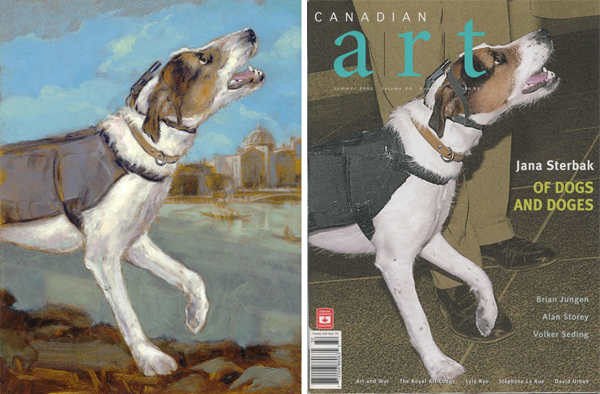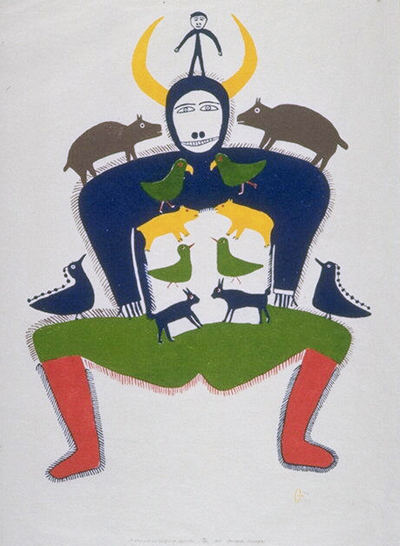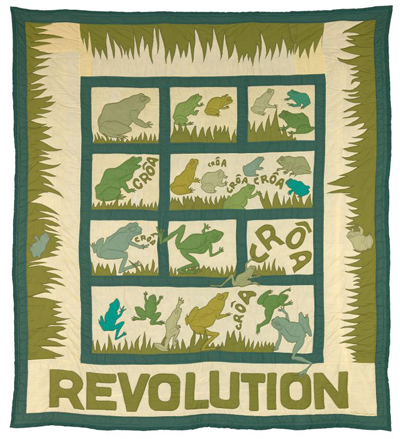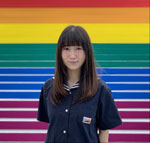Intertwined Connections
By: ArtBank / 15 May 2025
For Doors Open Ottawa 2025, the Art Bank is pleased to present Intertwined Connections, a thematic display of artworks that portray animals and explore diverse relationships between them and humans.
Animals have co-lived with and inspired humans for thousands of years. Representations of animals appeared as early as prehistoric times in cave paintings. The selection of over 30 artworks ranges from tiny insects to small rodents, to land mammals, and, to marine life, showcasing the diversity and beauty of these creatures.
More importantly, the selection demonstrates the complexity of the human-animal relationship, which can be reciprocal, confrontational, or even violent. But it also involves companionship and mutual care. From the works, we can also see how animals embody symbolic, spiritual, and cultural significance across different communities.
 Valerie Salez, Transmission Cloud, Sink Bale, and Circus Sleuth, 2008
Valerie Salez, Transmission Cloud, Sink Bale, and Circus Sleuth, 2008
Each of Valerie Salez’s collages features one kind of species. The images come from hundreds of publications—magazines, science journals, children’s books, etc.—from the 1920s to 2008, the time of making. By cutting them out, Salez brings the animals out of textual information, academic discussions, or narratives and places them in a playful visual rhythm. With the addition of specific objects—a transmission tower, a sink, balls and balloons, these collages invite us to relate to the animals’ characteristics and create our own stories.
 Marcel Piet-Hein Kerkhoff, Jana Sterbak’s Stanley, 2003
Marcel Piet-Hein Kerkhoff, Jana Sterbak’s Stanley, 2003
As the title suggests, this painting is about Canadian artist Jana Sterbak and her dog Stanley, a Jack Russell terrier. For the 50th Venice Biennale in 2003, Stanley worked as Sterbak’s collaborator. With a miniature video camera on his back, Stanley traveled along the St. Lawrence in Quebec in winter and explored Venice. Sterbak turned the footage into a video installation titled From Here to There shown at the Biennale. Based on the cover photo of Stanley on Canadian Art, Kerkhoff imagined the dog’s Venice trip with St Mark’s Basilica in the background.
 Jessie Oonark, A Shaman’s Helping Spirits, 1971. Stonecut by Thomas Sivuraq.
Jessie Oonark, A Shaman’s Helping Spirits, 1971. Stonecut by Thomas Sivuraq.
According to the traditional Inuit belief, a powerful individual such as a shaman is capable of transforming into animals and adapting their abilities to survive the harsh Arctic environment. The boundary between a human and animals can be ambiguous. Artist Jessie Oonark’s father and grandfather were said to be shamans. Oonark also recalled seeing her father’s small helping spirit “Uupitanaisuak,” who wears a baby caribou skin hat. In this artwork, the portrait of a horned shaman is prominent and symmetrical, accompanied by different types of animals. Can you identify them all? Are they residing in the shaman’s body? Or are they about to come out?
 Evelyn Coutellier, Revolution, 1975
Evelyn Coutellier, Revolution, 1975
Different from traditional Acadian quilts with symmetrical geometric patterns, Evelyn Coutellier’s design is akin to a comic strip that combines grids and texts. Frogs in blue and green, an uncommon animal motif in Acadian art and craft, jump around, cross the grid, or hide in the grass along the edge, croaking the song of revolution. Considering the practical function of this piece, would you like to fall asleep in the song of the frogs?
Explore the Art Bank
The Art Bank will be open for Doors Open Ottawa on June 7, 2025, from 10 a.m. to 4 p.m. Take this opportunity to explore the warehouse, talk to the Art Bank team, and see all of the works of art on display for Intertwined Connections.

About the Curator: Xiaofan Wu
Xiaofan Wu is a PhD student in Cultural Mediations at Carleton University, specializing in contemporary Chinese art. Her doctoral research examines contemporary artists in the Sinophone world whose works of art engage with the non-human natural world and articulate various relationships between humans and nature. Xiaofan was invited to guest curate a thematic display at the Art Bank’s 2025 Doors Open Ottawa as a practicum placement for her graduate diploma in Curatorial Studies.